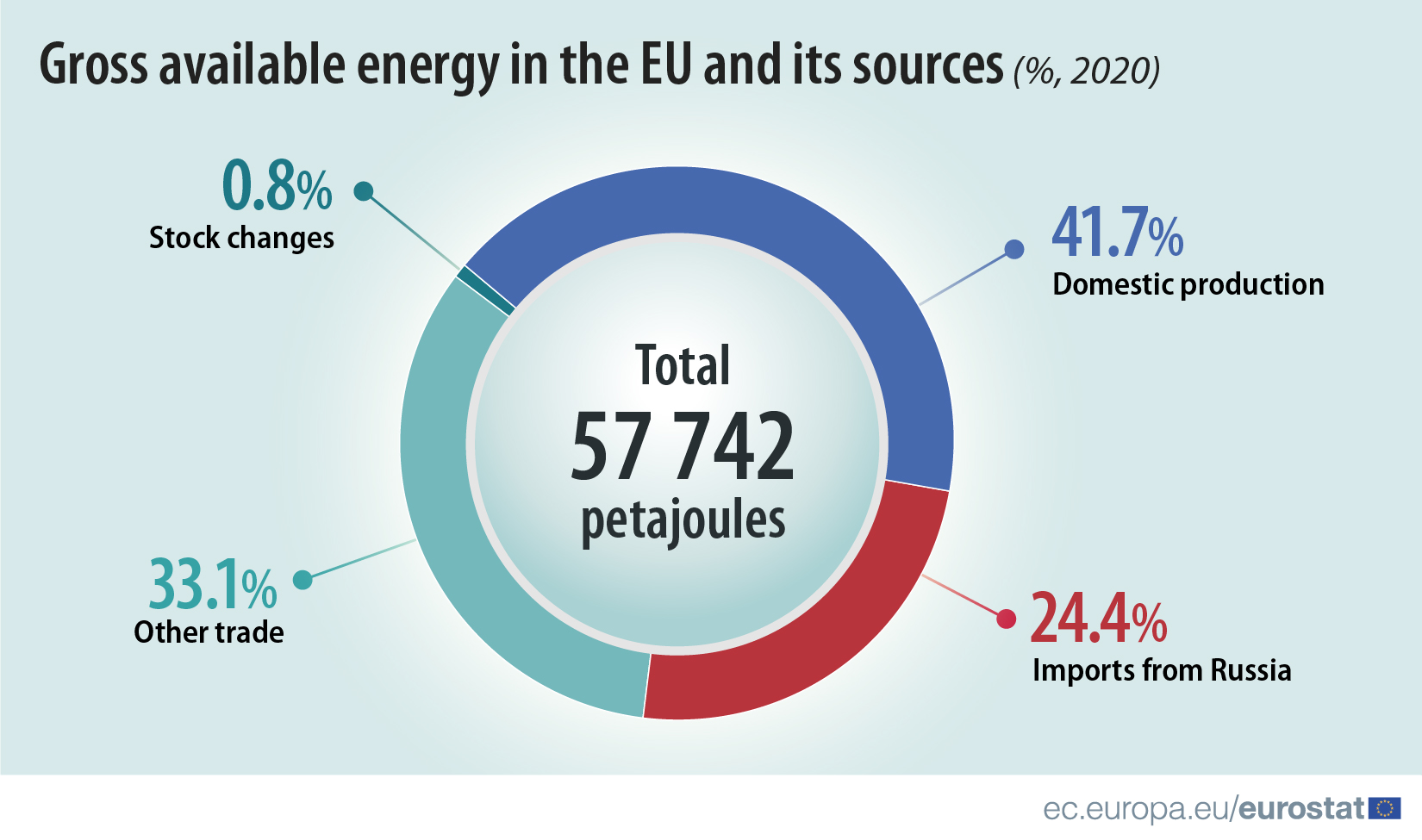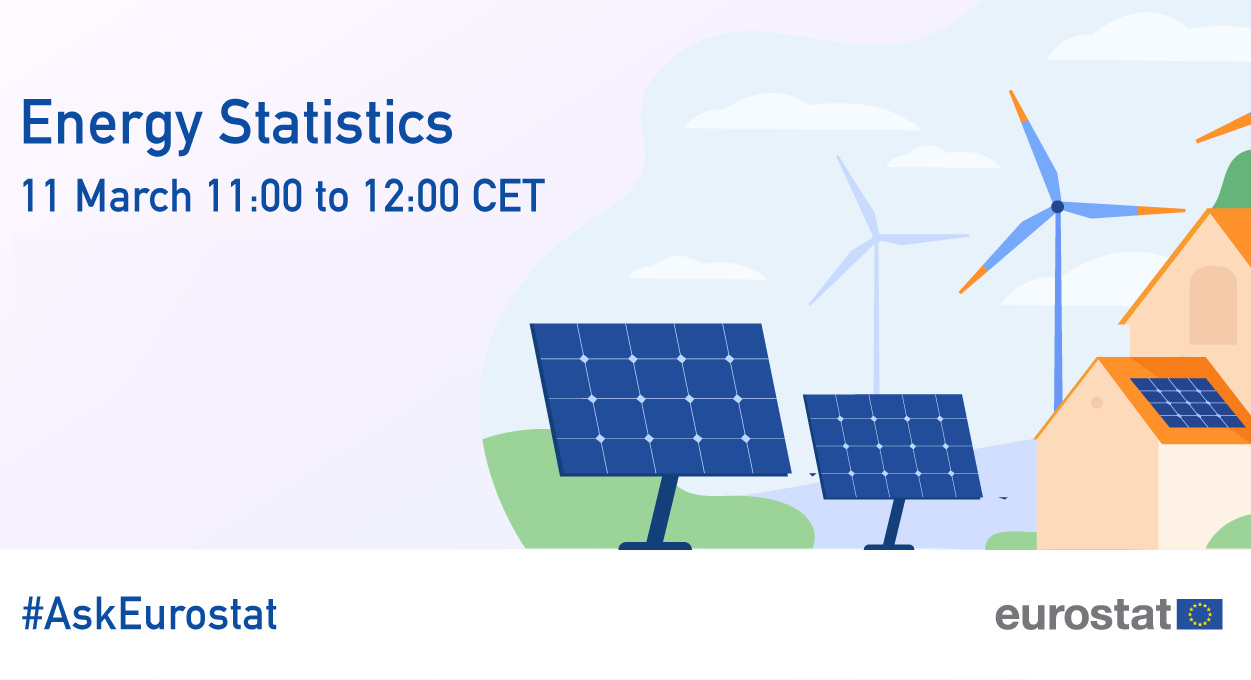In 2020, the EU imported 58% of the energy it consumed, as its own production satisfied only 42% of its needs.
The EU’s energy mix in 2020 consisted of 35% oil and petroleum products, 24% natural gas, 17% renewables, 13% nuclear energy and 11% solid fossil fuels. Russia is the EU’s leading supplier for natural gas, oil and coal, which are the main energy commodities of the EU’s energy mix. In 2020, imports from this origin satisfied 24% of the EU’s energy needs.
Source: Eurostat special extraction
Natural gas, a major fuel for electricity production and heating in the EU, was the fuel with the highest exposure to imports from Russia. In 2020, the EU received 46% of its natural gas imports from this supplier, satisfying 41% of gross available energy derived from natural gas.
Crude oil, an essential commodity for the production of transport fuels and the petrochemical industry, was the fuel family with the second-highest exposure to imports from Russia. In 2020, the EU relied on this provider for 26% of its crude oil imports, which satisfied 37% of the EU energy needs.
Lastly, solid fossil fuels (such as coal) had the lowest import dependency on Russia, which provided 19% of the EU use of solid fossil fuels. In 2020, the EU imported 53% of hard coal from this country, which accounted for 30% of the EU’s hard coal consumption.
If you’d like to learn more about energy statistics, the recording from our energy statistics webinar on 11 March is available on the webinar page. Furthermore, if you’d like more detailed information on the EU energy mix and import dependency, here’s the more detailed Statistics Explained article.
For more information:
- Eurostat Statistics Explained article on the EU energy mix and import dependency
- Eurostat webinar recording on energy statistics
- Eurostat overview on energy
- Eurostat database on energy
To contact us, please visit our User Support page.
For press queries, please contact our Media Support.



